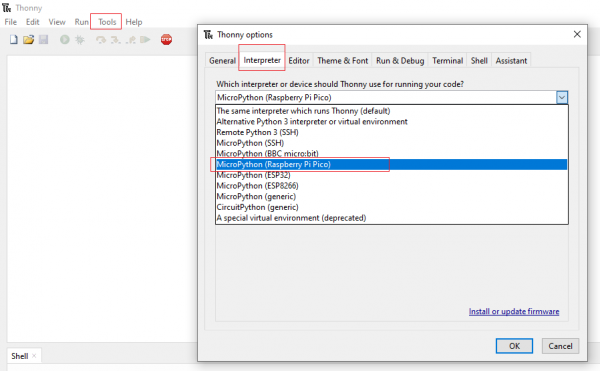Difference between revisions of "Pico-Cube"
From SB-Components Wiki
| Line 25: | Line 25: | ||
[[File:Thonny-interpreter.PNG|600px]] | [[File:Thonny-interpreter.PNG|600px]] | ||
* Download Pico Cube repository from the below link: | * Download Pico Cube repository from the below link: | ||
| − | Source code: https://github.com/sbcshop/ | + | Source code: https://github.com/sbcshop/PICO-CUBE |
* Open '''"demo.py"''' from the downloaded repository of Pico Cube in Thonny IDE and Click on the Green play button to run the code. | * Open '''"demo.py"''' from the downloaded repository of Pico Cube in Thonny IDE and Click on the Green play button to run the code. | ||
It will run a different LED pattern on Pico Cube. You can also modify this code to put your own creativity. | It will run a different LED pattern on Pico Cube. You can also modify this code to put your own creativity. | ||
== Resources == | == Resources == | ||
Revision as of 11:47, 29 October 2021
Pico Cube
Features
Specifications
File:Pico cube.png
Buy it From : Click Here
Pinout
Installation
MicroPython
- Stack Raspberry Pi Pico on the female header of Pico cube.
- Connect USB cable on Raspberry Pi Pico USB port.
- Choose interpreter as MicroPython (Raspberry Pi Pico).
- Download Pico Cube repository from the below link:
Source code: https://github.com/sbcshop/PICO-CUBE
- Open "demo.py" from the downloaded repository of Pico Cube in Thonny IDE and Click on the Green play button to run the code.
It will run a different LED pattern on Pico Cube. You can also modify this code to put your own creativity.

